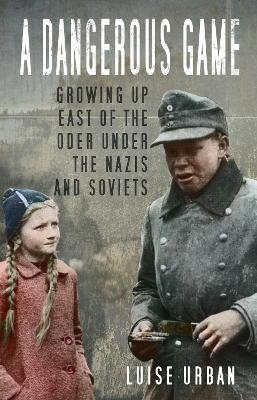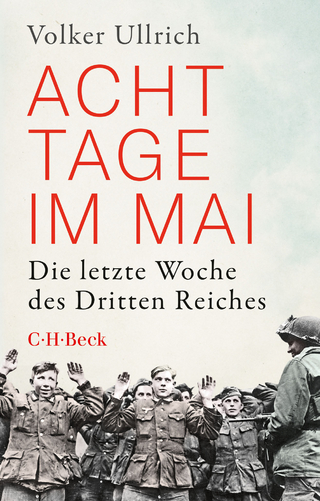
A Dangerous Game
Growing Up East of the Oder Under the Nazis and Soviets
2022
|
2nd edition
The History Press Ltd (Verlag)
978-1-80399-027-9 (ISBN)
The History Press Ltd (Verlag)
978-1-80399-027-9 (ISBN)
‘I was 11 years old. I witnessed the mindless cruelty of human beings. The only peace was when I was surrounded by the dead.’
Luise Urban was born in 1933 into a world about to be turned upside down. Her family lived east of the river Oder. Fatefully, her family were not Nazi Party members and suffered as a result. As the Third Reich crumbled and the Red Army advanced, she was one of 15 million Germans trapped in a war zone during the terrible winter of 1945. Weakened by starvation and forced to flee their home, it was only the bravery of Luise’s mother that saved the family from total destruction.
The Oder–Neisse line (Oder-Neiße-Grenze) is the German–Polish border drawn in the aftermath of the war. The line primarily follows the Oder and Neisse rivers to the Baltic Sea west of the city of Stettin. All pre-war German territory east of the line and within the 1937 German boundaries was discussed at the Potsdam Conference in 1945. Germany was to lose 25 per cent of her territory under the agreement. Crucially, Stalin, Churchill and Truman also agreed to the expulsion of the German population beyond the new eastern borders. This meant that almost all of the native German population was killed, fled or was driven out by force.
In A Dangerous Game, Luise relives that harrowing time, written in memory of her mother, to whom she owes her life. It is the story of a child, but it is not a story for children.
Luise Urban was born in 1933 into a world about to be turned upside down. Her family lived east of the river Oder. Fatefully, her family were not Nazi Party members and suffered as a result. As the Third Reich crumbled and the Red Army advanced, she was one of 15 million Germans trapped in a war zone during the terrible winter of 1945. Weakened by starvation and forced to flee their home, it was only the bravery of Luise’s mother that saved the family from total destruction.
The Oder–Neisse line (Oder-Neiße-Grenze) is the German–Polish border drawn in the aftermath of the war. The line primarily follows the Oder and Neisse rivers to the Baltic Sea west of the city of Stettin. All pre-war German territory east of the line and within the 1937 German boundaries was discussed at the Potsdam Conference in 1945. Germany was to lose 25 per cent of her territory under the agreement. Crucially, Stalin, Churchill and Truman also agreed to the expulsion of the German population beyond the new eastern borders. This meant that almost all of the native German population was killed, fled or was driven out by force.
In A Dangerous Game, Luise relives that harrowing time, written in memory of her mother, to whom she owes her life. It is the story of a child, but it is not a story for children.
LUISE URBAN was born in Germany in October 1933, her harrowing childhood forming the subject of this book. She moved to England in 1956 and became a state-registered nurse, and she took an Open University degree in Physics and Astronomy. She lives in Gwynedd, Wales.
| Erscheinungsdatum | 08.09.2022 |
|---|---|
| Zusatzinfo | 25 Illustrations, black and white |
| Verlagsort | Stroud |
| Sprache | englisch |
| Maße | 129 x 198 mm |
| Themenwelt | Literatur ► Biografien / Erfahrungsberichte |
| Sachbuch/Ratgeber ► Geschichte / Politik | |
| Geschichte ► Allgemeine Geschichte ► 1918 bis 1945 | |
| Geschichte ► Teilgebiete der Geschichte ► Militärgeschichte | |
| Sozialwissenschaften ► Soziologie | |
| ISBN-10 | 1-80399-027-9 / 1803990279 |
| ISBN-13 | 978-1-80399-027-9 / 9781803990279 |
| Zustand | Neuware |
| Haben Sie eine Frage zum Produkt? |
Mehr entdecken
aus dem Bereich
aus dem Bereich
ein Psychologe erlebt das Konzentrationslager
Buch | Hardcover (2024)
Kösel (Verlag)
CHF 30,80
Mythos „Stauffenberg-Attentat“ – wie der 20. Juli 1944 verklärt und …
Buch | Hardcover (2024)
Goldmann (Verlag)
CHF 33,55
die letzte Woche des Dritten Reiches
Buch | Softcover (2023)
C.H.Beck (Verlag)
CHF 22,40


